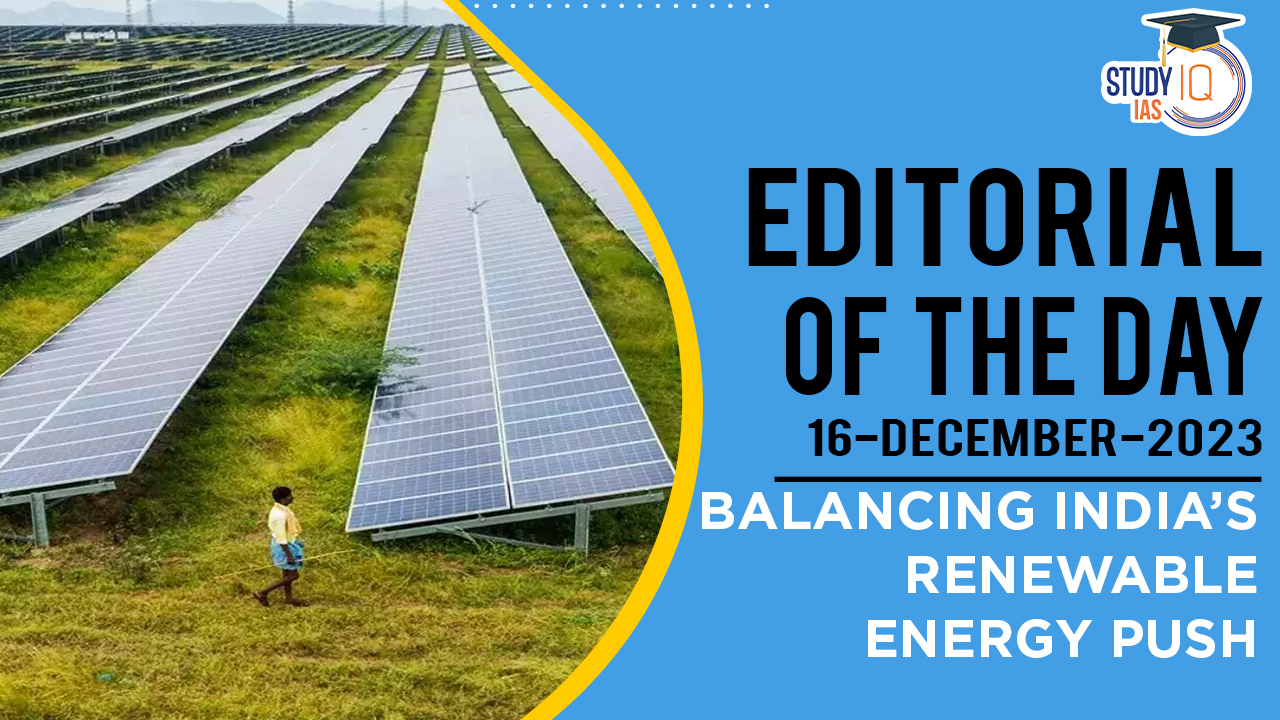Context: COP28 ended with a bumpy “transition from fossil fuels,” avoiding a direct phase-out due to major players like India, China & South Africa blocking a coal plant restriction clause.
India’s Renewed Focus on Coal Power
- Policy Shift Towards Coal: In a significant policy shift, India plans to increase its coal-powered generation capacity by 2031-32, with an addition of at least 80 gigawatts. This decision, aligning with the National Electricity Plan for 2022-27, marks a departure from the previous focus on renewable energy, where new coal-fired capacity was virtually ruled out.
- Meeting and Decisions: The decision to ramp up coal usage was made at a review meeting chaired by Union Power Minister R.K. Singh, indicating a return to coal for essential baseload capacity. The plan includes adding 60 GW of new coal-fired capacity in addition to the 27 GW already under construction.
We’re now on WhatsApp. Click to Join
Renewable Energy and Grid Challenges
- Government’s Green Initiatives: Over the past decade, the Indian government has consistently increased renewable capacity, making India the world’s third-largest producer of renewable energy.
- Grid Management Issues: The increased reliance on renewables has led to a 24% reduction in emission intensity of GDP from 2005 to 2016. However, this shift has introduced the challenge of intermittency in power supply, posing a significant issue for grid management.
- Energy Storage Needs: The review meeting acknowledged the necessity of energy storage solutions to manage the variability of renewable generation. Without effective storage, the incremental renewable capacity could cause difficulties for grid managers and state-owned distribution companies (discoms).
Coal as a Necessity
- The Interim Solution: Given the current constraints in ramping up nuclear capacity and the challenges with renewables, increasing coal-fired and nuclear generation is seen as a necessary interim measure.
- Cost Implications of Renewables: Experts have noted that the cost of renewable power might be higher than anticipated when considering the expenses of maintaining standby thermal power.
Looking Ahead
- Future of Renewable Energy: The decision to expand coal generation capacity significantly exceeds the earlier projections of the Electricity Plan draft. Concurrently, the push for renewable energy requires extensive investment in battery storage to support the grid effectively.


 World Population Day 2025, Themes, Histo...
World Population Day 2025, Themes, Histo...
 Special Intensive Revision (SIR) in Biha...
Special Intensive Revision (SIR) in Biha...
 List of Military Exercises of India 2024...
List of Military Exercises of India 2024...





















